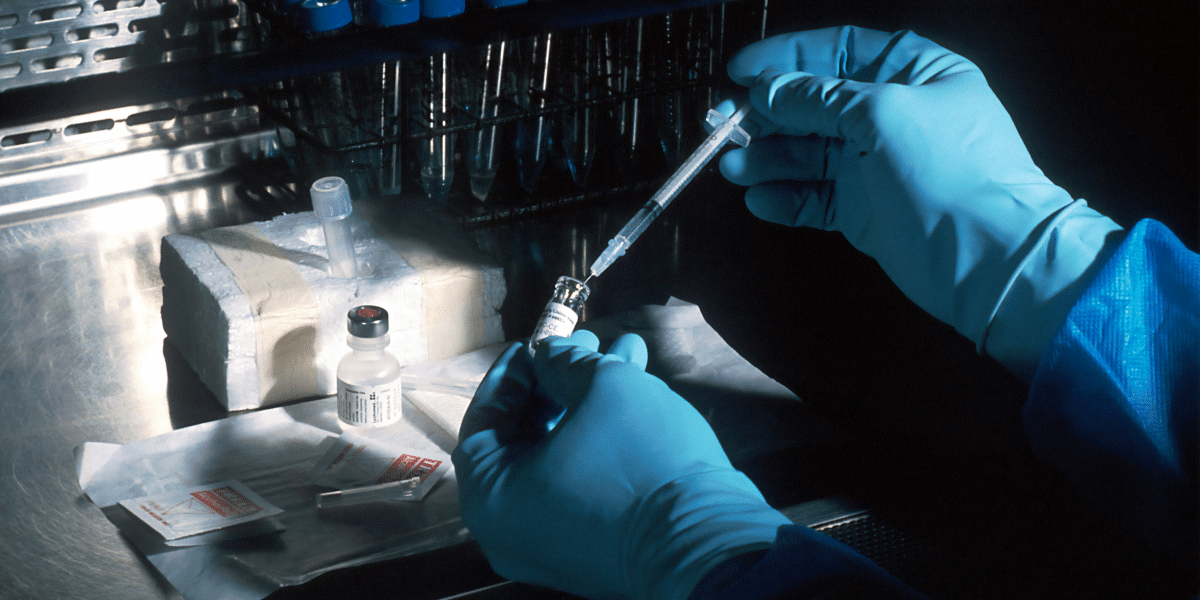By: PR Fueled
Introduction
The transportation industry is vital for moving goods and people, making road safety essential. Drug testing is crucial in maintaining safety standards by deterring substance abuse and ensuring drivers are fit for duty. This article explores drug testing’s role, history, regulations, and its impact on transportation safety.
History of Drug Testing in Transportation
Early Safety Measures in Transportation
Before drug testing, transportation safety relied on vehicle maintenance, driver training, and traffic laws. While essential, these measures didn’t address substance abuse among drivers, a significant road safety risk.
Introduction of Drug Testing Regulations
The 1980s saw the introduction of drug testing regulations in response to growing concerns about substance abuse among commercial drivers. The U.S. Congress passed the Omnibus Transportation Employee Testing Act of 1991, mandating drug and alcohol testing for safety-sensitive transportation employees. This landmark legislation marked the beginning of formalized drug testing programs aimed at enhancing road safety.
Evolution of Drug Testing Policies
Since the enactment of the Omnibus Transportation Employee Testing Act, drug testing policies have evolved to keep pace with advancements in testing technology and changing substance abuse trends. Today, drug testing is a standard practice in the transportation industry, with regulations continuously updated to address emerging challenges and improve testing accuracy.
Current Drug Testing Regulations
Federal Motor Carrier Safety Administration (FMCSA) Guidelines
The FMCSA oversees drug testing for commercial drivers in the United States. Their guidelines require pre-employment, random, post-accident, reasonable suspicion, return-to-duty, and follow-up testing. These regulations aim that drivers operating commercial motor vehicles (CMVs) are not under the influence of prohibited substances.
Department of Transportation (DOT) Requirements
The DOT mandated drug and alcohol testing for safety-sensitive transportation workers, including aviation, rail, transit, and pipeline. These comprehensive requirements cover various scenarios and enforce strict standards for procedures and lab certification.
State-Level Regulations
Beyond federal regulations, many states have their own drug testing laws, sometimes imposing stricter standards. Employers must navigate both federal and state regulations to aim for compliance in transportation.
Comparison of International Standards
Drug testing regulations differ globally, with some countries enforcing strict standards like the U.S., while others are more lenient. Multinational transportation companies must understand these varying international regulations.
Types of Drug Tests Used in the Transportation Industry
Urine Tests
Urine tests are the common method of drug testing in the transportation industry. They are relatively easy to administer and can detect a wide range of substances. However, they have a shorter detection window compared to other testing methods.
Hair Follicle Tests
Hair follicle tests offer a longer detection window, capable of identifying substance use over the past 90 days. This method is less common due to its higher cost and the need for specialized equipment, but it provides a more comprehensive assessment of an individual’s drug use history.
Saliva Tests
Saliva tests are minimally invasive and can detect recent drug use, typically within the past 24 to 48 hours. They are convenient for on-site testing and are becoming increasingly popular in the transportation industry for random and post-accident testing.
Blood Tests
Blood tests are highly accurate for detecting drugs and alcohol but are invasive and costly, making them less practical for routine testing. They are typically used in post-accident or suspicion scenarios.
Pros and Cons of Each Method
Each drug testing method has pros and cons. Urine tests are cost-effective; hair tests offer longer detection but are pricier. Saliva tests detect recent use, while blood tests are accurate but invasive.
Substances Commonly Tested For
Alcohol
Alcohol is one of the commonly tested substances in the transportation industry. Its effects on motor skills and judgment make it a significant risk factor for accidents. Testing for alcohol helps aim that drivers are not operating vehicles under the influence.
Marijuana
With the legalization of marijuana in many states, testing for this substance remains a critical component of drug testing programs. Marijuana can impair cognitive and motor functions, posing a danger to road safety.
Cocaine
Cocaine use is associated with severe health risks and impaired judgment. Testing for cocaine helps identify individuals who may be using this powerful stimulant, which can lead to dangerous behavior on the road.
Opioids
The opioid crisis has brought increased attention to the need for testing for these substances. Opioid use can severely impair a driver’s ability to operate a vehicle safely, making it essential to include in drug testing panels.
Amphetamines
Amphetamines, including methamphetamine, are stimulants that can lead to aggressive driving and impaired decision-making. Testing for these substances helps identify drivers who may be using them and posing a risk to public safety.
Other Controlled Substances
In addition to the substances listed above, drug testing programs often include testing for other controlled substances such as benzodiazepines, barbiturates, and synthetic cannabinoids. Comprehensive testing panels help ensure that all potential impairing substances are detected.
The Testing Process
Pre-Employment Testing
Pre-employment testing is conducted before a new hire starts working. This aims that the individual is free from prohibited substances and fit for duty. It is a crucial step in the hiring process for safety-sensitive positions.
Random Testing
Random testing is an effective deterrent to substance abuse. Employees are selected for testing at random, without prior notice, aiming that all workers remain vigilant about maintaining a drug-free status.
Post-Accident Testing
Post-accident testing is conducted following an accident involving a commercial vehicle. It helps determine whether substance use was a contributing factor to the incident and aims accountability.
Reasonable Suspicion Testing
Reasonable suspicion testing is conducted when an employer has reason to believe that an employee may be under the influence of drugs or alcohol. This type of testing is based on observable signs and behaviors indicating possible substance use.
Return-to-Duty Testing
Return-to-duty testing is required for employees who have previously tested positive or violated drug and alcohol policies. It aims that the individual is drug-free before resuming safety-sensitive duties.
Follow-Up Testing
Follow-up testing is part of a comprehensive program for employees returning to duty after a positive test. It involves a series of unannounced tests over a specified period to aim for continued compliance with drug-free policies.
Impact of Drug Testing on Safety
Reduction in Accidents
Drug testing has been shown to reduce the number of accidents involving commercial vehicles. By identifying and removing impaired drivers from the road, drug testing enhances overall safety and prevents potentially catastrophic incidents.
Employer Perspectives
Employers in the transportation industry generally support drug testing as a vital safety measure. Many report improved safety records, lower accident rates, and enhanced employee performance as a result of comprehensive drug testing programs.
Employee Perspectives
While some employees may initially view drug testing as an invasion of privacy, many recognize its importance in aiming for a safe work environment. Education and support programs can help employees understand the benefits of drug testing and encourage a positive attitude towards these measures.
Challenges in Drug Testing
False Positives and Negatives
One of the challenges in drug testing is the occurrence of false positives and negatives. False positives can result from cross-reactivity with other substances, while false negatives may occur if the test is not sensitive enough to detect low levels of the substance.
Privacy Concerns
Privacy concerns are a significant issue in drug testing. Employees may feel that their personal privacy is being violated by mandatory testing. Balancing the need for safety with respect for individual privacy is a delicate task for employers.
Legal Implications
Drug testing programs must navigate a complex landscape of legal requirements and protections. Employers must aim for compliance with federal, state, and local laws while also respecting employees’ rights.
Technological Limitations
Despite advances in testing technology, limitations remain. Some testing methods may not detect newer synthetic drugs or may have a limited detection window. Continuous improvement and adaptation are necessary to keep up with evolving substance use trends.
Technological Advances in Drug Testing
Improved Testing Methods
Recent advancements in testing methods have enhanced the accuracy and reliability of drug tests. Innovations such as instant testing kits and more sensitive detection techniques have improved the effectiveness of drug testing programs.
Digital Record-Keeping
Digital record-keeping systems streamline the administration of drug testing programs. These systems aim for accurate record-keeping, reduce paperwork, and facilitate compliance with regulatory requirements.
Mobile Testing Units
Mobile testing units bring drug testing capabilities directly to the workplace or accident site. This convenience enhances the efficiency of testing programs and aims for timely testing, especially in post-accident scenarios.
Future Trends in Drug Testing Technology
The future of drug testing technology includes developments such as predictive analytics and artificial intelligence (AI). These technologies can identify patterns of substance use and predict potential risks, allowing for proactive measures to enhance safety.
Benefits of Drug Testing for Employers
Enhanced Safety Records
Employers who implement drug testing programs often see significant improvements in their safety records. Reducing the number of impaired drivers on the road leads to fewer accidents and a safer working environment.
Lower Insurance Costs
Insurance companies recognize the value of drug testing in reducing accident rates. Employers with robust drug testing programs may benefit from lower insurance premiums, reflecting the decreased risk associated with a drug-free workforce.
Improved Employee Performance
Drug testing helps ensure that employees are operating at their premier. By identifying and addressing substance abuse issues, employers can promote a healthier, more productive workforce.
Legal Protection and Compliance
Adhering to drug testing regulations provides legal protection for employers. It demonstrates a commitment to safety and compliance, reducing the risk of legal disputes and penalties associated with substance-related incidents.
Employee Assistance Programs (EAPs)
Role of EAPs in Supporting Workers
Employee Assistance Programs (EAPs) play a crucial role in supporting workers who may be struggling with substance abuse. These programs offer confidential counseling, resources, and referrals to help employees address their issues.
Resources and Counseling Services
EAPs provide a range of services, including substance abuse counseling, mental health support, and stress management resources. These services help employees overcome challenges and maintain a drug-free lifestyle.
Success Stories and Outcomes
Many success stories highlight the positive impact of EAPs on employees’ lives. Workers who have utilized these programs often report significant improvements in their personal and professional well-being, contributing to a safer and more supportive work environment.
Public Perception and Support for Drug Testing
Public Awareness Campaigns
Public awareness campaigns play a vital role in garnering support for drug testing in the transportation industry. These campaigns educate the public about the importance of drug testing in ensuring road safety and protecting the community.
Community Involvement
Community involvement initiatives, such as partnering with local organizations and hosting educational events, help build trust and support for drug testing programs. Engaging the community fosters a shared commitment to safety.
Media Portrayal of Drug Testing in Transportation
Media portrayal of drug testing can influence public perception. Positive coverage of successful drug testing programs and their impact on safety can enhance public support, while negative coverage may raise concerns about privacy and fairness.
Future of Drug Testing in the Transportation Industry
Predictive Analytics and AI
Predictive analytics and AI are poised to revolutionize drug testing in the transportation industry. These technologies can analyze data to predict potential substance abuse issues, allowing for early intervention and preventive measures.
Policy Changes and Anticipated Regulations
As the transportation industry evolves, so too will drug testing policies. Anticipated regulations may address emerging substances, improve testing methods, and enhance compliance standards to ensure ongoing safety.
Global Trends and Harmonization of Standards
Global trends in drug testing highlight the movement towards harmonized standards. International cooperation and the adoption of premier practices can lead to more consistent and effective drug testing programs worldwide.
Final Thoughts
Drug testing is vital in transportation, ensuring drivers and workers are fit for duty and enhancing road safety. Advancements in testing, regulations, and support programs will further strengthen these safety measures. Commitment to improving drug testing programs is essential for maintaining high safety and performance standards in the industry.
Disclaimer: This content is for informational purposes only and is not intended as medical advice, nor does it replace professional medical expertise or treatment. If you have any concerns or questions about your health, always consult with a physician or other healthcare professional.
Published by: Holy Minoza



















